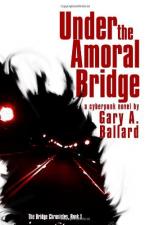|
This section contains 8,601 words (approx. 29 pages at 300 words per page) |

|
SOURCE: “Birth of the Cyberqueer,” in PMLA, Vol. 110, No. 3, May, 1995, pp. 369-81.
In the following essay, Morton examines homosexuality in postmodern and cyberpunk theory.
In today's dominant, “post-al” academy, the widely celebrated “advance” in the understanding of culture and society brought about by ludic (post)modernism has been enabled by a series of displacements: of the signified by the signifier, of use value by exchange value, of the mode of production by the mode of signification, of conceptuality by textuality, of the meaningful by the meaningless, of determination by indeterminacy, of causality by undecidability, of knowing by feeling, of commonality by difference, of political economy by libidinal economy, of need by desire, and so on.1 In the domain of sexuality, the new space of queer theory is a postgay, postlesbian space. Ludic (post)modernism, which promotes the localizing of cultural phenomena, discourages any effort to render these developments...
|
This section contains 8,601 words (approx. 29 pages at 300 words per page) |

|


